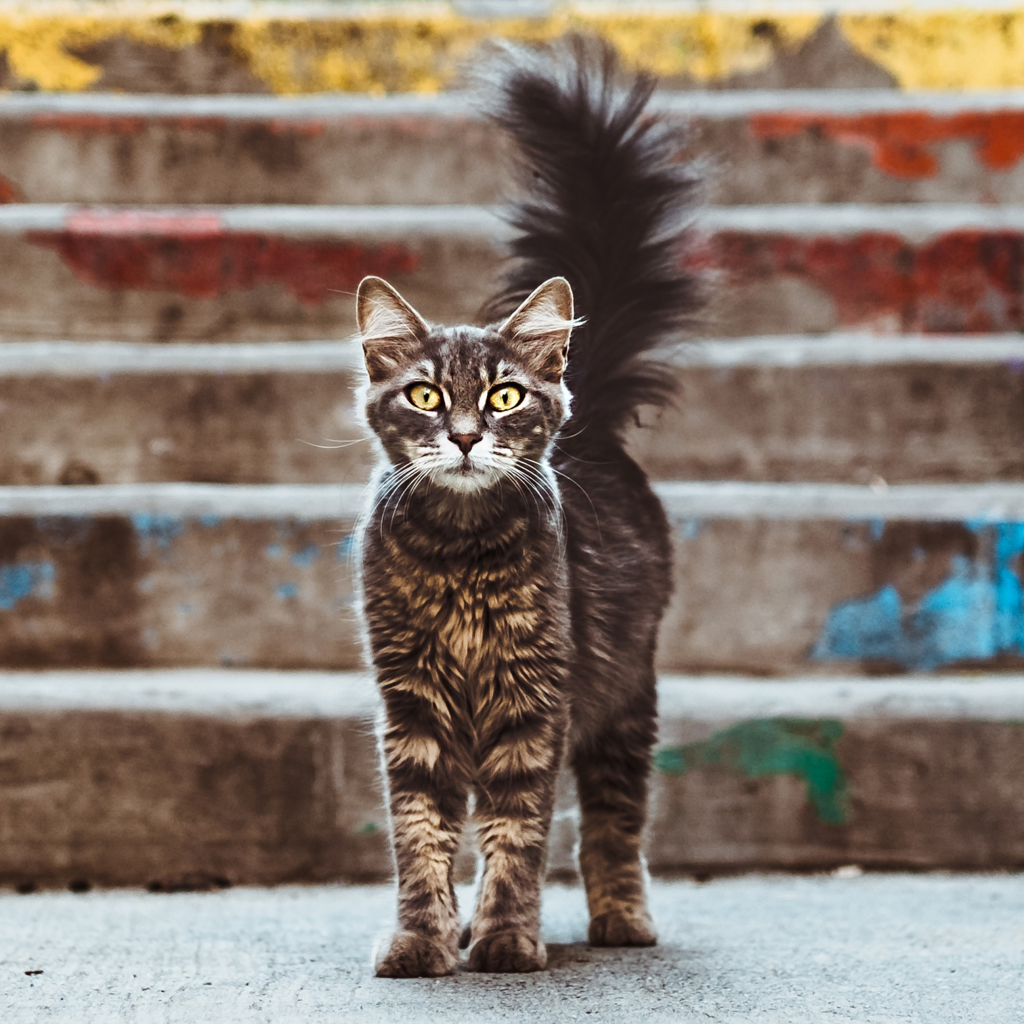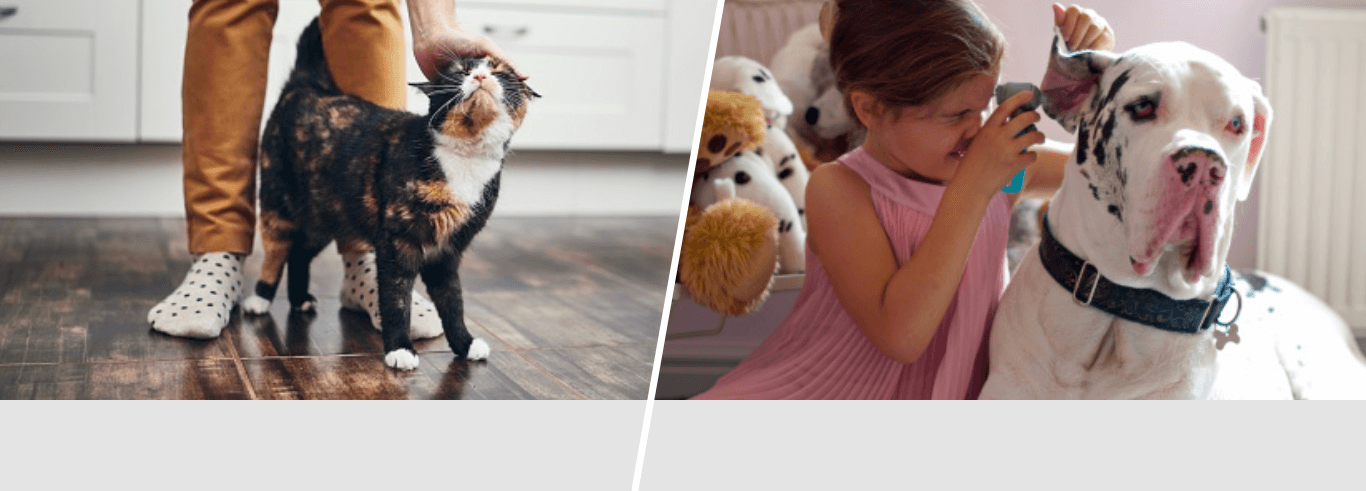Cat tail signs: what is my cat’s tail trying to tell me?
Let’s face it, cats are mysterious creatures and understanding how they operate doesn’t always come naturally to us humans. Do you find yourself asking: “what is my cat trying to tell me?” Well, the answer may be simpler than you think.
The positioning of your cat’s tail can tell you when they’re feeling playful and happy or when it’s time for you to steer clear, this is known as cat tail language. Between their eyes, ears, body posture, and in particular their tail, your kitty is telling you exactly how they’re feeling, you just need to learn how to read the signs!
Once you understand the cat tail signs and what a cat’s tail means, you can better read your feline friend’s emotions and feelings which can help you identify their needs.

Cat Tail Language
A cat’s tail can be a great signalling tool as it’s highly mobile and a good indicator of their mood. There can be many cat tail meanings and if you’re ever curious about what your cat is feeling, reading the tail signals is a great start. If you want to get more than just the gist of what your kitty is telling you, it’s important to observe their entire body language and what could be triggering their change in mood.
High Tail
What does it mean when a cat’s tail is up? If your cat is holding their tail up high in the air as they move about, it means they’re feeling confident and happy. If you notice the tip of their tail twitching or slightly curved, that means they’re especially happy. Your kitty’s willingness to be friendly means this is a good time to offer playtime, cuddles, and even treats .
Question Mark Shaped Tail
When your kitty’s tail is curved like a question mark, your feline friend is typically in a playful mood. They’re ready to share the fun with you, so taking some time to play is encouraged! Start by offering your hand for them to sniff so you can gauge how playful your cat wants to be.
Low Tail
What does it mean when a cat’s tail is down? If you notice that your kitty’s tail is sitting low, this can be a sign of aggression and shows that they are in a very serious mood. Although, it is important to acknowledge your cat’s body language as a whole as some breeds, like Persian cats, tend to carry their tails low.
When you see a cat’s tail down, don’t try to engage. Pay attention to your surroundings and try to neutralise whatever is upsetting them.
Whipping Tail
If you notice your cat is wagging its tail rapidly, this indicates a sense of fear and aggression. Strong movement in your kitty’s tail represents strong emotions. Your feline friend’s tail whipping means they are charged and ready to act.
While it’s important to pay attention to your environment and check if there’s anything agitating your cat, you should leave them alone when their tail is in a whipping position.
Puffed Up Tail
What does it mean when a cat’s tail puffs up? When your cats puffed up tail starts to resemble a pipe cleaner, it can mean they are severely agitated and frightened. Perhaps they are confronted by another animal or just feel a general sense of danger, but a fluffy and arched tail is used in an attempt to look bigger and is a response to a threat. While you’ll probably want to comfort your kitty, it is best to leave them alone to assess the situation. If you can, try removing anything in their environment they may find worrisome to help them calm down.
Wagging Tail
Why do cats wag their tails? The meaning behind a cat tail wagging isn’t always clear. The swaying position is a very similar movement to when a cat’s tail is whipping but there is a difference. A swaying tail is typically at a slower pace and may be seen during playtime. The tail ‘swish’ symbolises great focus. Whether it’s on a piece of kibble, a shadow, or their favourite toy , your cat is ready to pounce. This is typically in a light-hearted manner, so let your kitty follow their instincts. Allow them to pursue their “hunt” and come to you when ready.
Tucked Away Tail
Whenever your cat’s tail is wrapped around themselves or tucked away under their body, your cat is withdrawing and choosing not to interact. This could be due to a sense of fear or as an act of submission.
Again, it’s important to look at the bigger picture. If your cat crawls up next to you and their tail is around them, things are probably fine. However, if you find your pet being tense with awkward tail placement like hovering over the ground, they may feel threatened and are ready to lash out. If you don’t notice anything in your environment that is provoking them, wait for your cat to come to you once their nerves have calmed.
Now you know more about your cat’s tail and what they’re trying to tell you, make sure you remember to help protect yourself from vet bills should your cat get injured, with Argos Pet Insurance provided by Pinnacle Insurance Ltd. Explore our cat insurance policies today.
 Sorry, our lines are now closed
Sorry, our lines are now closed



